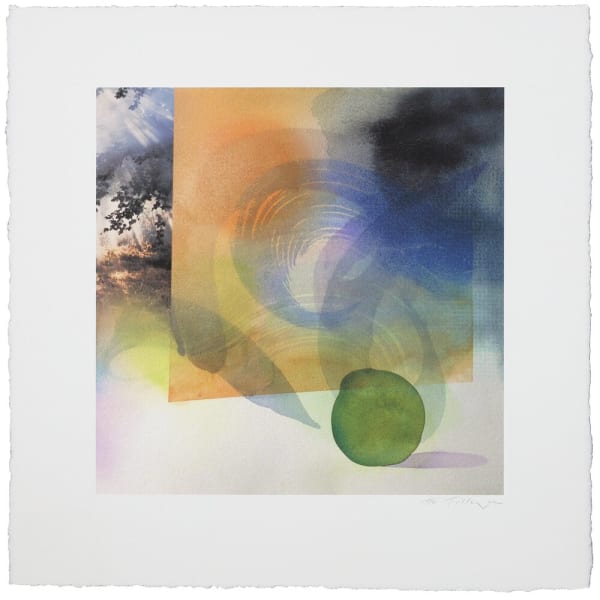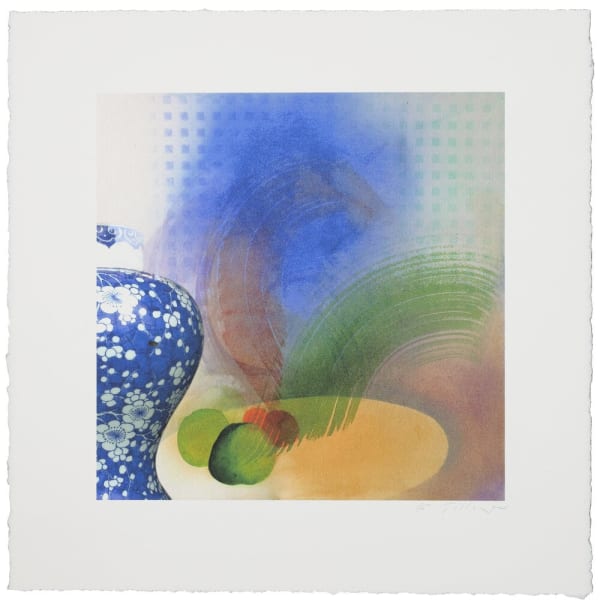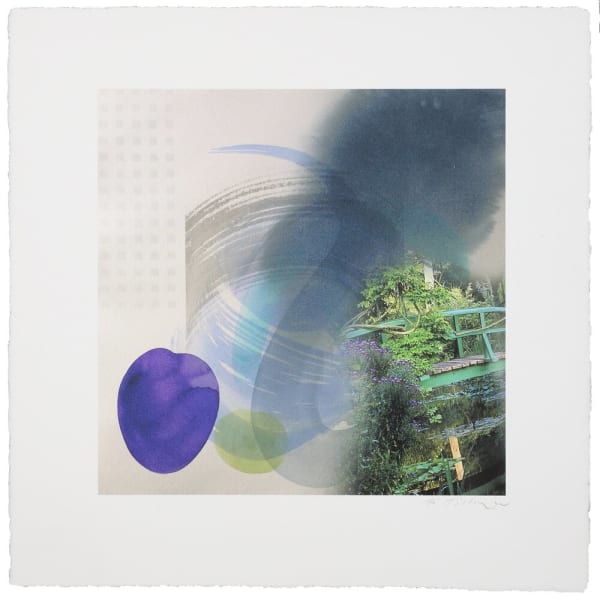William Tillyer British, b. 1938
"THERE'S A TOUCH OF HERMIT ABOUT HIM, BUT NO MORE THAN THAT...HE IS AN ARTIST BY CHOICE AND WORKS WITH A PERSISTENCE THAT SPEAKS OF ENDLESS ENERGIES. HE CALLS HIMSELF A PAINTER, BUT HAS PROVED HIS SKILLS AT DRAWING, PRINTMAKING OVER A WIDE RANGE OF PROCESSES, AND PAINTING WITH WATERCOLORS, OILS AND ACRYLICS. HE OFTEN USES MATERIALS AND TECHNIQUES NOT ASSOCIATED WITH PAINTING: THREE DIMENSIONAL PANELS, PANELS WITH OPENINGS CUT INTO THEM; CUT CANVASES STRETCHED TOGETHER WITH STRING; STRONG WIRE MESH AS SUPPORT AND AS REPRESENTATION; OTHER 'OFF-THE-SHELF' MATERIALS SUCH AS DRAWER PULLS, PIANO HINGES AND PEBBLES. HE USES THESE, THE NORMAL AND THE EXTRANEOUS, BECAUSE THEY SERVE HIM AND HE LIKES THEM, BUT ALSO BECAUSE HE CAN SET UP A DIALOGUE BETWEEN THEM - SAY BETWEEN OBVIOUSLY MAN-MADE THINGS AND HIS OWN (MAN-MADE) SIGNALS-IN-PAINT THAT MAY SUGGEST NATURE, SUCH AS SKY, EARTH, TREES ETC.,AND MAY NOT. HE CAN ALSO INVERT THE DIALOGUE, REFUTING WHAT HIS WORK HAD PREVIOUSLY SEEMED TO ESTABLISH. THE POINT OF SUCH CONTRADICTORY DIALOGUES IS TO INVESTIGATE AND DEMONSTRATE EVER MORE FULLY THE ARTIFICIALITY OF ART."
- NORBERT LYNTON FROM WILLIAM TILLYER: AGAINST THE GRAIN, PUBLISHED 2001
William Tillyer's work has been shown frequently in London and New York since 1970. Admired by fellow artists and collectors, it has mystified critics — even those eager to praise him. Why does his work keep changing? Why does each new phase seem to contradict and undermine the last? Why doesn't he establish a brand image and stick by it?
Much of Tillyer’s art and its motivation is stimulated by a dialogue about the nature of painting, what it was, is, and could be. He sees this dialogue as a continuum — a conflict of 'The Real' and its opposition, 'Artifice'. In articulating such a dialogue, the artist puts it to the service of an all-embracing 'Universal' view, where each and every element is equal and reductive.
Tillyer was born in Middlesbrough, northern England, and studied painting at The Slade. He has evolved into an astonishingly diverse and talented artist. Today, Tillyer is one of Britain's most respected artists, with a still growing reputation. In an age where personality has become a cult, Tillyer is concerned to let the painting speak for itself and to withdraw his own personality as much as possible.








